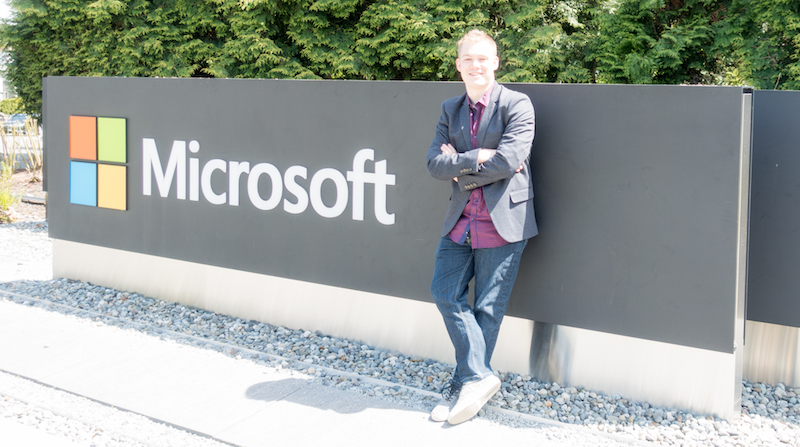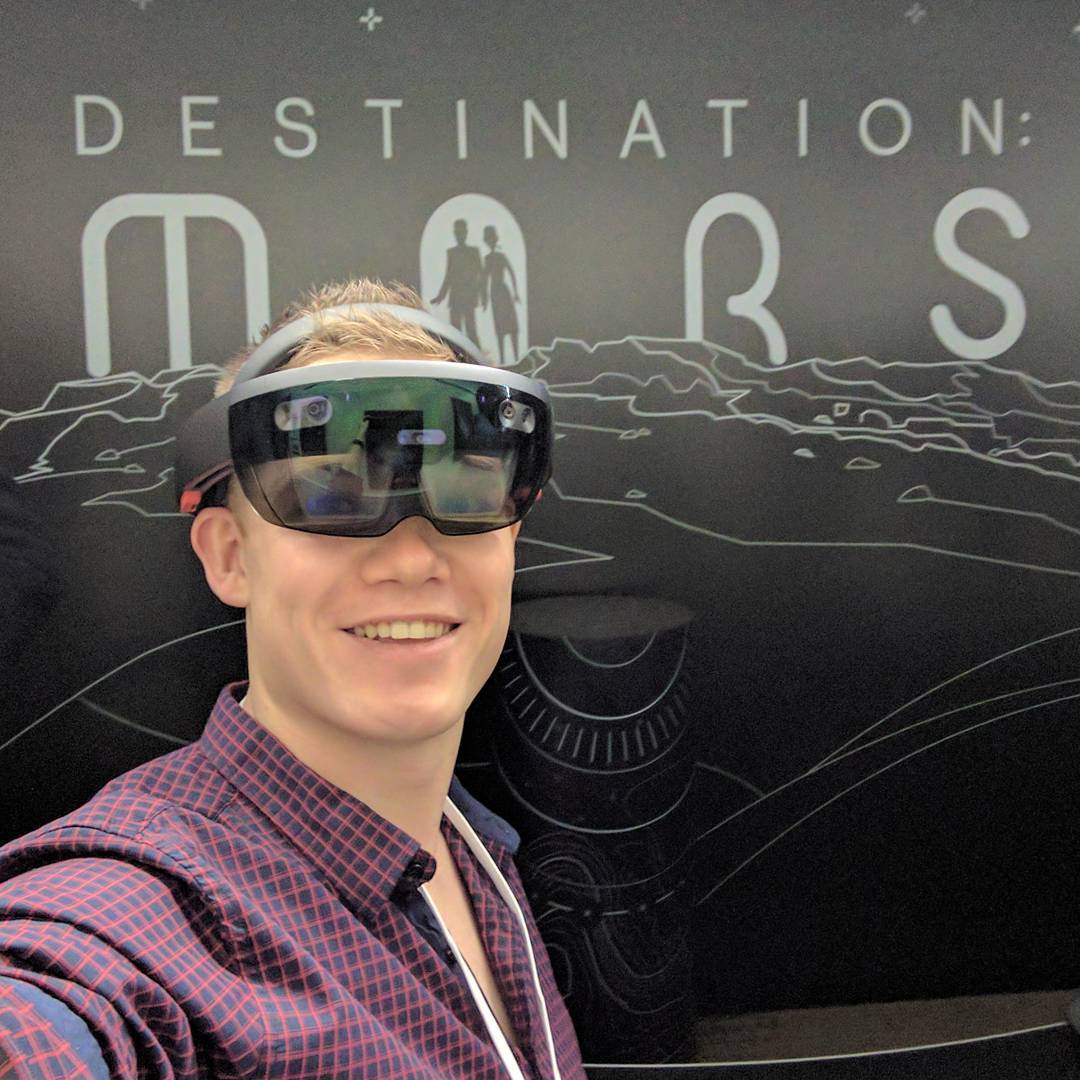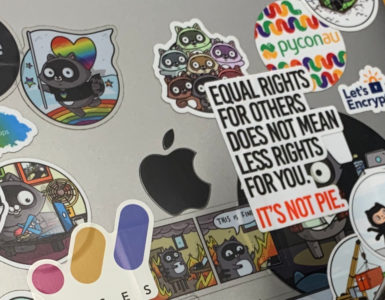Surprise (or no surprise) – I’m in Seattle for #MSBuild this week! I’m also delighted to be part of a small Microsoft-invited group called TAG (Technical Advisory Group), composed of folks from around the world with a strong open source tech background.
Our itineraries are packed, and I’ll be sharing some of the sights, insights and delights along the way.
In today’s itinerary, we’ve been treated to a round of shiny toys and tech-theatre. A combination of hands-on time with the Hololens to a variety of talk, demo and tours of various facilities across Microsoft’s HQ in Redmond.
Our tour included the hololens (both group and individual sessions and demonstrations), the Cyberdefence Centre and the Envisioning Centre. Much of our tour was not allowed to be photographed (trust me – not even a selfie, and believe me I tried!). All in all it was a well rounded day showcasing some of the future-thinking experiences that Microsoft may have in store for us sometime soon.
Cyberdefence centre
Cyber security is always an eye-opening and sometimes eyebrow-raising topic – the cyberdefence centre promised to be no different. The space (or at least the parts we’re allowed to see) felt more like a NASA command centre with an assortment of pods, screens and collaborative team pods. Again, no photos but it felt like a cross between a Hollywood set and a space launch ( or perhaps it was all staged – I’ll never know).
What was eye opening was the sheer scale at which Microsoft operates. Take a moment to consider the mix of X-box, Azure, and Windows services etc. that we interact with everyday – that’s all an interaction and touch point that Microsoft can measure and use as signals for security analysis. At that scale, they can detect over a million new pieces of malware created each day. It’s also alarming that the time from intrusion to detection was over 140 days… that’s like over 3 months of someone observing your every move through your unpatched insecure home security system or an internet enabled kettle.
An eye-opening 3 trillion dollars of market value is destroyed due to breaches in security, over 15 million dollars paid to cyber crime and 82% companies actively expect a cyber attack. That implies almost 1/5th of businesses don’t expect (and therefore probably don’t plan for) a security attack or breach.
Bringing all this together, it was clear Microsoft could bring its full operational capability and insight into one cyber-operations ‘war-room’. If only I could be a fly on the wall during an incident!
Now I must admit, a tour of Redmond isn’t complete without a token photo outside the Microsoft sign!

The Envisioning (centre)
The afternoon’s session at the envisioning centre was particularly enthralling (and very well performed). It’s a mix of current tech and thought leading storytelling to explore how our lives will be in 3-7 years time. It’s not Trekkie level space-tech, but it was pretty cool seeing services like Cortana, Kinect and Surface Hub’s play together into completely new and believable scenarios. Take for example Cortana and calendar management. Most AI driven digital assistants are able to handle some level of autonomy these days but they’re limited by the data available to them via other APIs.
The envisioning centre explored what human experience would be possible if we broke down the restrictions of existing data access through a range of existing APIs we already have today.
We were presented with a seamless interaction between phone, home and work devices with an emphasis on highly contextual and relevant interactions powered by machine learning.
It’s about this point you’re allowed to call buzzword bingo!
Ergonomic, custom designed meeting spaces (note, not rooms) designed with Surface HUb’s and a suite of Kinect’d tech explored how simple design can democratise participation in meetings – a fascinating take on how the space around us influences our behaviour. Technology should supplement the design and add value rather than be the focal point of each interaction.
This exhibit was very ‘drink the Kool-Ade’ – a well-rehearsed tech pitch… err I mean performance. The tech, while cool wasn’t actually that new, rather it was demonstrated in different aspects of everyday life; kind of like today’s tech with tomorrow’s hardware.
Hololens’ing
Our time with the Hololens was quite cool and very hands on. Hololense is a mixed-reality device using lenses to overlay additional visual detail (think, holograms). Note, it’s not a screen or projection like VR headsets like Google’s Daydream.
All in all the Hololense is cool, shiny but still a tad clunky. The tech is amazing and our simulations were very well led by the Hololens team yet. The Hololens does, however (by design), have a very limited visual space that it can ‘overlay’ into – directly in front of the eye; so this means no holograms in your peripheral vision. This might not seem to be such a bad thing at first but I found after a few demo’s I was physically turning my head a LOT more than I would normally in order to interact with physical objects in a room – after all they had to be in the centre of my vision for Hololens to work its magic.
Also – Mars is kinda cool!
The scenarios were predominantly workflow based in a variety of professions. While they were well-told stories, the sheer size and weight of the Hololens in its current iteration makes me hesitant to think consumers will wear the half-a-kilo headset for more than minutes at a time. In contrast, the prototypes of Google Glass before Glass was (not) shelved were much less intrusive on physical movement and had a similar ability to interact with the physical space around it.
The hololens is cool. Really cool. However I feel it needs another iteration or two before it provides true consumer or business value to workflows.
The hololens is a fun tool, but arguably a toy at this stage. It’s got some phenominal tech behind it however, and as it evolves it has a real opportunity to change the way we work. My prediction is we’ll see it reach popularity and familiarity with consumers before we see it reach business; in much the same way that we saw the iPad grow from a household object to a core business device for many professions (ever seen a real estate agent without a tablet recently?).
Today felt like a glimpse of the hardware of tomorrow powering the tech of today; a mix of simulation and real world experiences. I’m almost tech’ed out and thats a lot for me. I can’t wait for what tomorrow brings!


